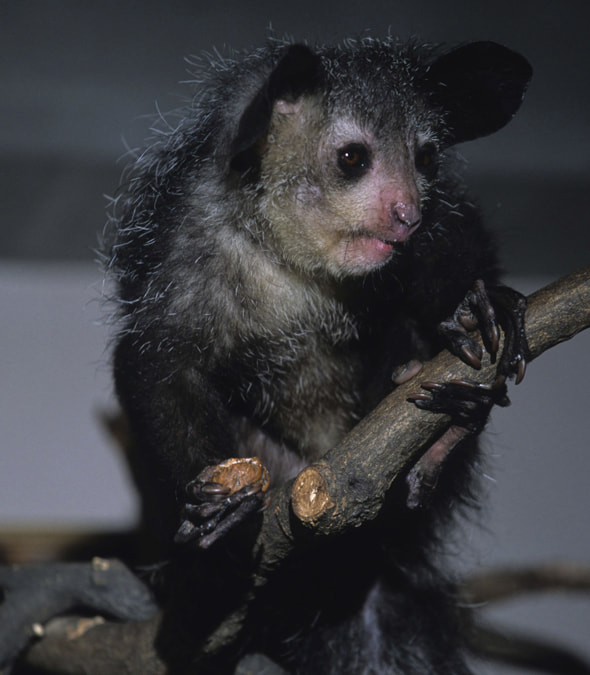
An aye-aye which came from Tsimbazaza Zoo in Madagascar in 2001
The aye-aye native to the Island of Madagascar is the member of the family Daubentoniidae. It is a nocturnal primate and lives almost alone. It eats fruits and nuts of a tree called "ramie."
The zoo has four functions: recreation, education, research and conservation of nature. The zoo tended to be considered as a facility of recreation, in which animals are bred and shown to the public. However, in the 21st century, the global warming, environmental destruction associated with population growth, and damage to forests, lakes and marshes caused by acid rain have had effects on various destruction of nature and decrease in the number of wild animals. Therefore, in 1988, the Tokyo Metropolitan Government, which has control over municipal zoos in Tokyo, began the "Zoo Stock Plan," related to preservation and breeding of precious animals, as its accelerated project. Later, the Zoo Stock Plan developed into the "Zoo 2001 Scheme," in which zoos are positioned as places to study environment. Although there are many animals that should be saved, 50 species were selected as "zoo stock species" considering capacities of zoos, and each municipal zoo shares the responsibility of breeding animals.
The zoo stock species are as follows:
1) In principle, species that are now kept in zoos and stipulated in the Annex I and II of the Washington Convention
2) Species that are protected by domestic laws in foreign countries
3) Species that are protected by domestic laws in Japan
4) Species that need to be protected due to decrease in the number of wild individuals
(continued in the lower column)
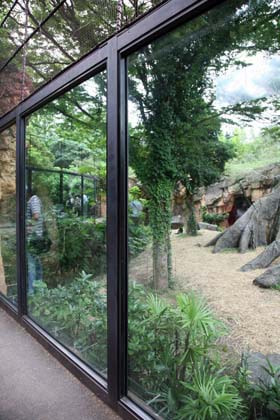
Woods where gorillas and tigers live
Cages and fences of the "woods where gorillas and tigers live," opened in 1996, were removed, and it is now surrounded by glass walls. Visitors can view gorillas and tigers along with their ecology and habitats.
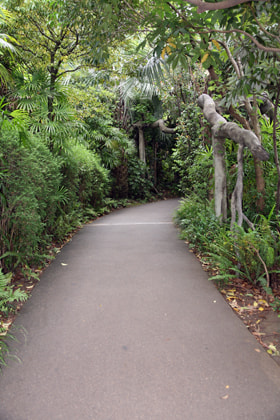
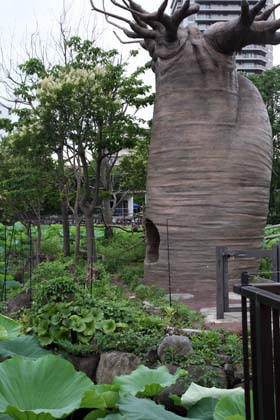
Woods where aye-ayes live
The "woods where aye-ayes live," located beside Shinobazuno Pond in the West Garden, reminds visitors of a forest in Madagascar where ring-tailed lemurs and aye-ayes live.
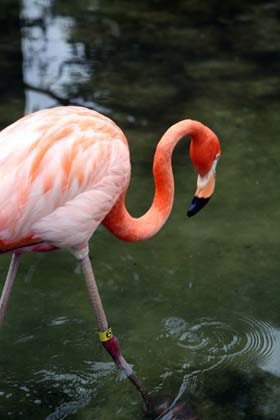
A flamingo in the West Garden slowly walks through a pond that is a reproduction of its natural habitat.
In order to make a success of breeding, it is necessary to keep animals in wide areas and implement group feeding to avoid inbreeding, which attaches importance to genetic diversity, instead of installing facilities intended to just display animals. Therefore, each zoo has reduced the number of species to be displayed and avoided to redundantly display animals in order to clarify division of displaying roles. As a result, popular animals, such as lions, disappeared from the Ueno Zoo (Asiatic lions borrowed from the Zoorasia Yokohama Zoological Gardens have been kept and displayed since 2002).
After considering preservation of these species, the Ueno Zoo has had charge of 16 zoo stock species.
1) 7 mammals - western lowland gorilla, dhole, Malay bear, giant panda, leopard cat, Sumatran tiger and Japanese bear
2) 2 birds - northern goshawk and scarlet ibis
3) 6 reptiles - pig-nosed turtle, dwarf crocodile, Gila monster, African rock python, leopard gecko and Madagascar chameleon
4) 2 fishes - Queensland lungfish and Asian arowana
Another central pillar of the Zoo 2001 Scheme is to develop environmental learning. It leads visitors to think the global environment by showing relations between animals and their habitats to visitors. Therefore, instead of previous displaying methods, such as using concrete floors and iron bars, animal houses in zoos have been improved in order for visitors to understand various animal behavior and importance of natural environments through reproduction of animals' habitats. Animals which live in groups, such as gorillas, are basically kept in groups, and multiple species are displayed in continuous space and environment. Also, not only these viewpoints of equipment and materials but also intangible aspects for leaning have been enriched in the present-day zoos.
The "Master Plan for Municipal Zoos" was formulated in September 2011, and with the themes, such as "Zoos that disseminate handling and feeding techniques to the world and contribute to preservation of wild animals in Tokyo, Japan and the world" and "Zoos that nurture a sense for animals and nature and build bridges between human beings and animals," the zoos' facilities have been upgraded responding to changes of circumstances around the municipal zoos and aquarium (Ueno Zoological Gardens, Tama Zoological Park, Tokyo Sea Life Park and Inokashira Park Zoo). In the master plan, it is stipulated that the Ueno Zoo assumes a role of "zoo that disseminates the importance of preserving wild animals both at home and abroad through attractively displaying a variety of animals," and carries out "the development of a zone, in which a base to dispatch information regarding wild animals around the world is created, multiple species are displayed in three-dimensional environments, and animal habitats are reproduced."
For the "Master Plan for Municipal Zoos," please refer to the website of the Bureau of Construction, Tokyo Metropolitan Government.
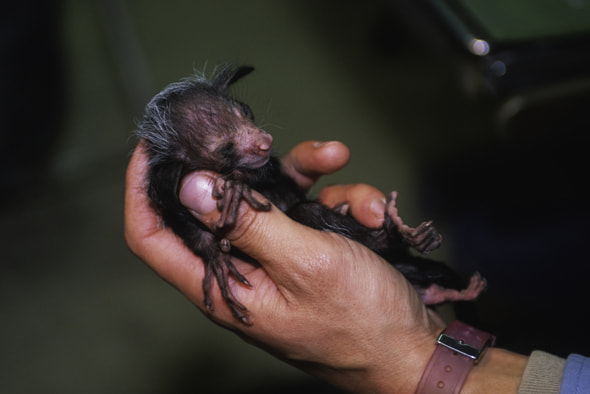
An aye-aye born in 2002
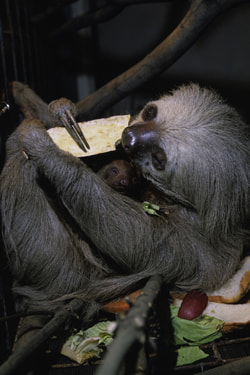
Hoffmann's two-fingered sloth's parent and successfully bred child (2002)
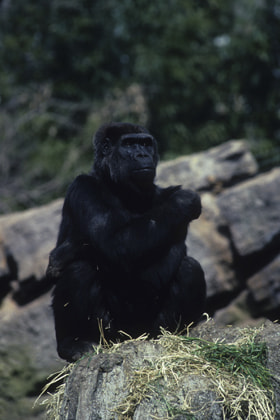
Biko (came from the Asa Zoo in 1993)
Gorillas were brought together with the help of zoos in various places in order to make a troop of gorillas. Piko is still alive in the Ueno Zoo.
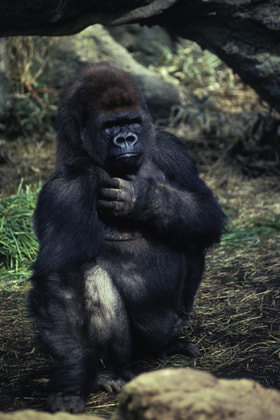
Drum (came from the Miyazaki City Phoenix Zoo in 1993, and died in 1998)
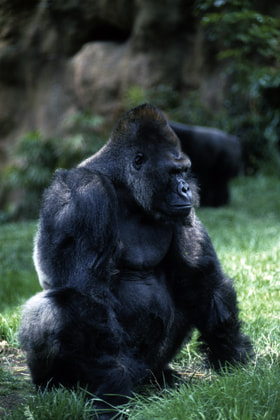
Sultan (came from the Tama Zoological Park in 1993, and died in 1997)
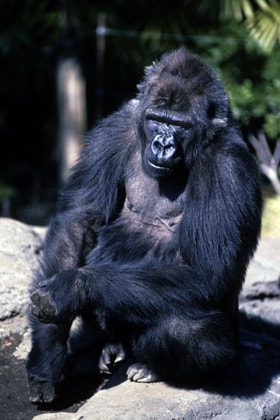
Lola (came from the Tobu Zoo in 1993, and went to the Chiba Zoological Park in 2008)
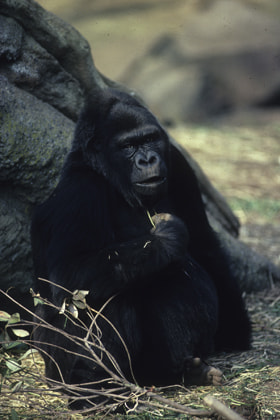
Rirako (came from the Beppu Rakutenchi in 1993, and died in 2007)
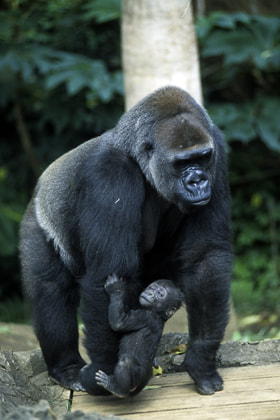
Momoko and her child (came from the Chiba Zoological Park in 1999, and had her first child, Momotaro, in 2000. They are now living with her second child, Komomo, in the Ueno Zoo.)
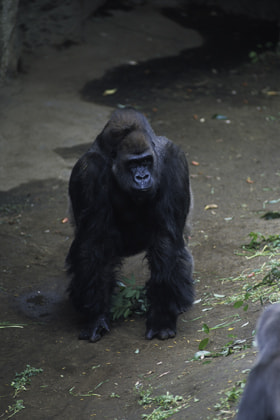
Musashi (He came from the Kushiro City Zoo in 2000, and still alive in the Ueno Zoo.)
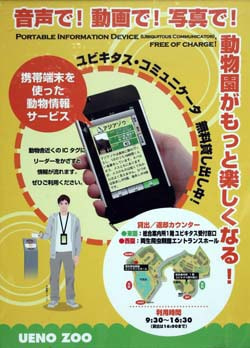
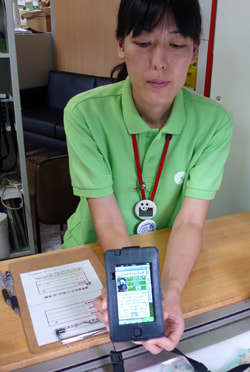
Visitors can use Ubiquitous Communicators to obtain textual information and movies from equipment installed in front of each animal house, and listen to explanations about animals while actually seeing the animal.
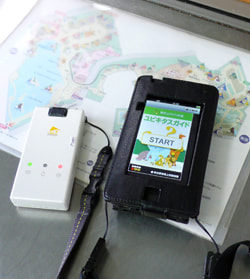

Ubiquitous Communicators provide services in Japanese, English, Chinese and Korean.


Visitors can use Ubiquitous Communicators to obtain textual information and movies from equipment installed in front of each animal house, and listen to explanations about animals while actually seeing the animal.


Ubiquitous Communicators provide services in Japanese, English, Chinese and Korean.

Hoffmann's two-fingered sloth's parent and successfully bred child (2002)

Musashi (He came from the Kushiro City Zoo in 2000, and still alive in the Ueno Zoo.)














